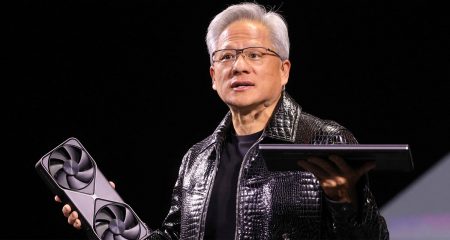 Apple’s biggest competitor in China isn’t Xiaomi or Huawei; it’s Tencent.
Apple’s biggest competitor in China isn’t Xiaomi or Huawei; it’s Tencent.
Industry observers have known for a while that Tencent’s WeChat, including its Mini Programs platform, has the potential to displace the App Store. And its operating system-agnostic nature means that users can easily swap from device to device, even across operating systems.
Now the company seems set on building out the long tail, maximising value beyond mainstream usage of its core products.
At its annual WeChat conference this week, Tencent executives took the stage to outline their business and development plans. On the agenda was its strategy for building out Mini Programs — a service that allows third-party developers to run scaled-down apps on top of WeChat’s instant messenger.
Niche apps within WeChat, such as those used by a parent-teacher group or neighbourhood grocery store, accounted more than half of total Mini Programs traffic, Daiwa Capital Markets analysts John Choi, Candis Chan and Robin Leung wrote in a note after attending the event in Guangzhou.
Being able to find these apps is a key issue, so Tencent is working on ways to improve this, the analysts wrote. The company is also creating developer and management tools to make it easier to build these apps, and will ramp up monetisation of Mini Programs.
‘We’ll do the rest’
“Just build a good Mini Program, and we’ll do the rest,” Tencent executives told the conference, according to the Daiwa analysts.
With WeChat itself nearing peak penetration (it has 1.1 billion monthly active users), Tencent needs to go deeper to keep growing. It’s already nailed the big-ticket items — chat, pay and online-to-offline services — so now it must hunt for niches.
It’s this “there’s an app for that” approach that turned Apple’s iOS and Google’s Android into ubiquitous destinations for all manner of weird and wonderful tools — blowing out a candle with your iPhone, or saying “Yo” to a friend. What makes Tencent’s Mini Programs even more powerful is the fact that everybody in China uses WeChat (meaning there’s no iOS versus Android cleavage), and it seamlessly integrates with the core functions of the Tencent messenger (chat, pay, services).

The key to leveraging this long tail will be Tencent’s recent shift toward industrial and enterprise use.
Matthew Brennan, a WeChat expert and founder of Chinese marketing consultancy China Channel, summarised Tencent’s strength in a quote from Snap founder Evan Spiegel (Tencent owns 15% of Snap):
Tencent very early on understood the power of communication because it drives frequency. And if you can be the service that’s most frequently used on someone’s phone, you’re able to develop a lot of other ancillary businesses around that engagement.
Whereas online, and later mobile, communication was once about humans chatting with humans, the next wave will be around enterprises communicating with humans, or with each other. WeChat could be used to manage inventory and order supplies, assess weather, and automatically deploy taxis or stock up on umbrellas, or serve up ads for hot chocolate versus ice cream.
Not only would this build more stickiness — organisations are less capricious than consumers when it comes product selection — but it would allow for collection and analysis of much more data.
As Tencent transforms over the next decade, filling niches and connecting enterprises, we may find that humans are no longer the most important users. — Reported by Tim Culpan, (c) 2019 Bloomberg LP




